Contents
- Incumbents
- Events
- January
- February
- March
- April
- May
- June
- Births
- Full date missing
- Deaths
- Full date missing 2
- See also
- References
| |||||
| Decades: | |||||
|---|---|---|---|---|---|
| See also: | |||||
Events in the year 1945 in the Netherlands .
| |||||
| Decades: | |||||
|---|---|---|---|---|---|
| See also: | |||||
Events in the year 1945 in the Netherlands .


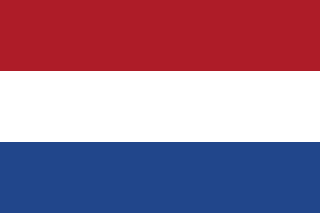
The Dutch government-in-exile, also known as the London Cabinet, was the government in exile of the Netherlands, supervised by Queen Wilhelmina, that fled to London after the German invasion of the country during World War II on 10 May 1940. The government had control over the Free Dutch Forces.

Arthur Seyss-Inquart was an Austrian Nazi politician who served as Chancellor of Austria in 1938 for two days before the Anschluss. His positions in Nazi Germany included deputy governor to Hans Frank in the General Government of Occupied Poland, and Reich commissioner for the German-occupied Netherlands. In the latter role, he shared responsibility for the deportation of Dutch Jews and the shooting of hostages.

The Dutch famine of 1944–1945, also known as the Hunger Winter, was a famine that took place in the German-occupied Netherlands, especially in the densely populated western provinces north of the great rivers, during the relatively harsh winter of 1944–1945, near the end of World War II.

Despite Dutch neutrality, Nazi Germany invaded the Netherlands on 10 May 1940 as part of Fall Gelb. On 15 May 1940, one day after the bombing of Rotterdam, the Dutch forces surrendered. The Dutch government and the royal family relocated to London. Princess Juliana and her children sought refuge in Ottawa, Canada until after the war.
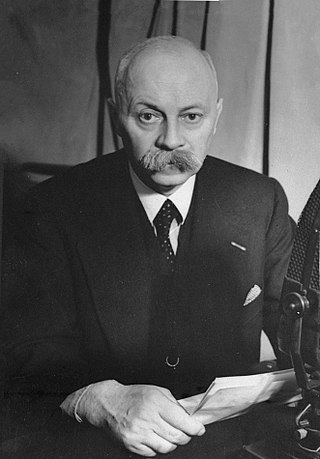
Pieter Sjoerds Gerbrandy was a Dutch politician and jurist who served as Prime Minister of the Netherlands from 3 September 1940 until 25 June 1945. He oversaw the government-in-exile based in London under Queen Wilhelmina during the German occupation of the Netherlands. He was a member of the Anti-Revolutionary Party (ARP).

Operation Manna and Operation Chowhound were humanitarian food drops to relieve the Dutch famine of 1944–45 in the German-occupied Netherlands undertaken by Allied bomber crews during the last days of the war in Europe. Manna, which dropped 7,000 tonnes of food into the still Nazi-occupied western part of the Netherlands, was carried out by British Royal Air Force (RAF) units and squadrons from the Royal Australian Air Force (RAAF), Royal Canadian Air Force (RCAF), Royal New Zealand Air Force (RNZAF) and Polish Air Force squadrons in the RAF. Chowhound dropped 4,000 tonnes and was undertaken by the United States Army Air Forces. In total, over 11,000 tonnes of food were dropped over one and a half weeks with the acquiescence of the occupying German forces to help feed Dutch civilians in danger of starvation.

The Dutch resistance to the German occupation of the Netherlands during World War II can be mainly characterized as non-violent. The primary organizers were the Communist Party, churches, and independent groups. Over 300,000 people were hidden from German authorities in the autumn of 1944 by 60,000 to 200,000 illegal landlords and caretakers. These activities were tolerated knowingly by some one million people, including a few individuals among German occupiers and military.

Dolle Dinsdag took place in the Netherlands on 5 September 1944, when celebrations were prompted after broadcasts incorrectly reported that Breda had been liberated by Allied forces.
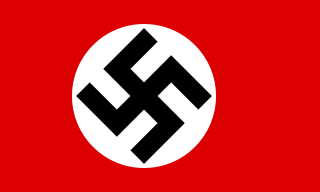
The Reichskommissariat Niederlande was the civilian occupation regime set up by Germany in the German-occupied Netherlands during World War II. Its full title was the Reich Commissariat for the Occupied Dutch Territories. The administration was headed by Arthur Seyss-Inquart, formerly the last chancellor of Austria before initiating its annexation by Germany.
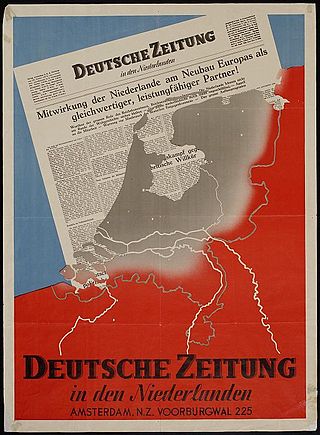
The Deutsche Zeitung in den Niederlanden was a German-language nationwide newspaper based in Amsterdam, which was published during almost the entire occupation of the Netherlands in World War II from June 5, 1940 to May 5, 1945, the day of the German capitulation in the "Fortress Holland". Its objective was to influence the public opinion in the Netherlands, especially the one of the Germans in this country.
Operation Silbertanne was the codename of a series of executions that were committed between September 1943 and September 1944 during the German occupation of the Netherlands. The executions were carried out by a death squad composed of Dutch members of the SS and Dutch veterans of the Eastern Front.

Robert van Genechten was a Belgian-born Dutch politician and writer and a leading collaborator during the German occupation of the Netherlands.

German–Dutch relations are diplomatic, military and cultural ties between the bordering nations of Germany and the Netherlands. Relations between the modern states started after Germany became united in 1871. Before that the Netherlands had relations with Prussia and other, smaller German-speaking nations. Both countries are full members of the Council of Europe, the European Union and NATO.
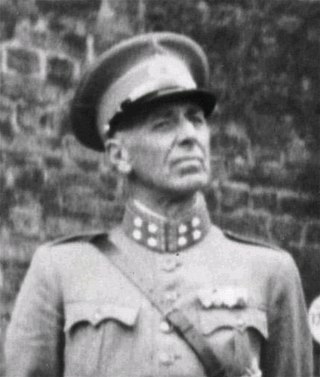
Hendrik Alexander Seyffardt was a Dutch general, who during World War II collaborated with Nazi Germany during the occupation of the Netherlands, most notably as a figurehead of the Volunteer Legion Netherlands, a unit of the Waffen-SS on the Eastern Front.
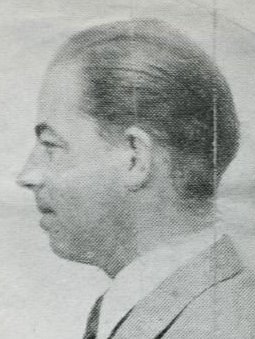
Dr. Gerrit Willem Kastein was a Dutch communist, neurologist and resistance fighter and leader during World War II.

Wilhelm (Willi) Friedrich Adolf Ritterbusch, was a Nazi Party political functionary. Among other positions, he was the German Generalkommissar zur Besonderen Verwendung, directing the political affairs and propaganda in the occupied Netherlands from the middle of July 1943 until 7 May 1945, the end of World War II.
Events in the year 1944 in the Netherlands.
The Nederlandse Landwacht was a Dutch paramilitary organization founded by the German occupation forces in Holland on November 12, 1943. It should not be confused with the military volunteer corps 'Landwacht Nederland', which was established in March 1943 and renamed Landstorm Nederland in October, and which became part of the Waffen-SS.
This timeline is about events during World War II of direct significance to the Netherlands. For a larger perspective, see Timeline of World War II.
{{cite book}}: CS1 maint: postscript (link){{cite book}}: CS1 maint: postscript (link)